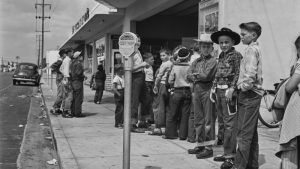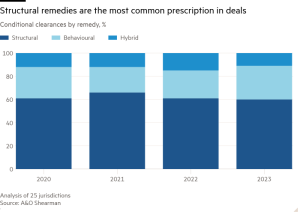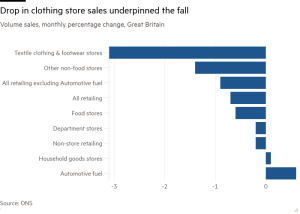Like Michigan, the US is neither red nor blue
Unlock the US Election Countdown newsletter for free
The stories that matter on money and politics in the race for the White House
The writer is a contributing columnist, based in Chicago
Carpenter Avenue in Grand Rapids, Michigan — with its brilliant fall foliage and modest mid-century homes — is an unlikely battleground for next week’s US presidential election. But it’s just the kind of place where the victor could be decided, political experts say.
It’s in Kent County, an unexpectedly purple island near the mostly “red” eastern shores of Lake Michigan, in the “blue wall” state of Michigan. Latest polls show the two US presidential candidates in a dead heat in the state — one of the most important swing states in the nation.
Trump-Vance yard signs alternate with Harris-Walz placards on the leaf-adorned streets of Grand Rapids, the business and financial hub of western Michigan. I recently spent a day “door knocking” in this middle-class suburb and in nearby working-class Wyoming, with a footballer-turned-seminarian for the local Republicans, and a recent college graduate for the Democrats.
Christina and Clayton live a few doors apart on Carpenter Ave. (They both declined to give their surnames.) Christina’s manicured lawn sports two red and blue Trump signs; Clayton’s house is festooned with autumn garlands and multiple Harris placards. Christina points out that Harris tokens outnumber Trump emblems on her block — she worries that her candidate won’t win Kent County; Clayton worries that he will. But they both agree that yard signs are not votes, and that demographic shifts have profoundly transformed Kent County in recent years.
Once reliably Republican, an influx of better-paid young professionals and blue-collar Latino voters has pushed Grand Rapids into blue territory, while rural Kent County remains largely red, local political experts say. Donald Trump won the county 48.3 to 45.2 per cent in 2016; in 2020, he lost it to Joe Biden 51.9 to 45.8 per cent. Bernie Porn, president of Michigan pollsters Epic MRA, calls it a “key indicator” county.
The Democrats have seen a “tremendous influx of energy and people” since Kamala Harris entered the race, says Gary Stark, former County Democratic party chair and current first vice-chair. Kent has “changed a lot in the last 10 years, all in ways that trend well for Democrats. We have a younger median population than either the state or the country. We have a higher voter turnout. These are all things that trend for Democrats,” he told me. But he’s not declaring victory: “Everything is very close, and when it’s that close, it’s very hard to tell what is going on.”
Stark points out that some people — in Kent County, like everywhere in the US — “don’t care about politics, one way or the other”. Politically engaged Americans may find that hard to believe, but I met some of them while waiting outside the Grand Rapids General Motors plant at shift change; several said they didn’t plan to vote.
In an election this close, those who stay at home can influence the outcome too, political experts say. The website 10x Votes says that Michigan has 1.7mn “low propensity voters”, more than 10 times Biden’s margin of victory in the state in 2020. The website also urges Republicans to “find 10 friends who don’t vote and we win”.
Republican Paul Hudson, candidate for US Congress from a district that includes Kent County, told me: “I think there are a lot of voters who maybe aren’t totally satisfied with either party.”
He’s already thinking beyond the poll. “The reality is we’re going to wake up on November 6, and we’re probably going to have divided government: the House (of Representatives) is close, the Senate’s close, the presidency is close. Maybe one side will sweep it, maybe not. But people expect things to get done, even when we have divided government.”
He calls for a return to “good old-fashioned ethics, like bipartisanship, like working with people that we don’t agree with on every single issue”. Because at the end of the day, much of America is likely to end up nearly as evenly split as swing states such as Michigan.
It’s hard to see the upcoming poll settling things definitively, anywhere in the country — and certainly not among the duelling yard signs of Carpenter Ave, on these final days of one of the most momentous elections I can remember.
#Michigan #red #blue




